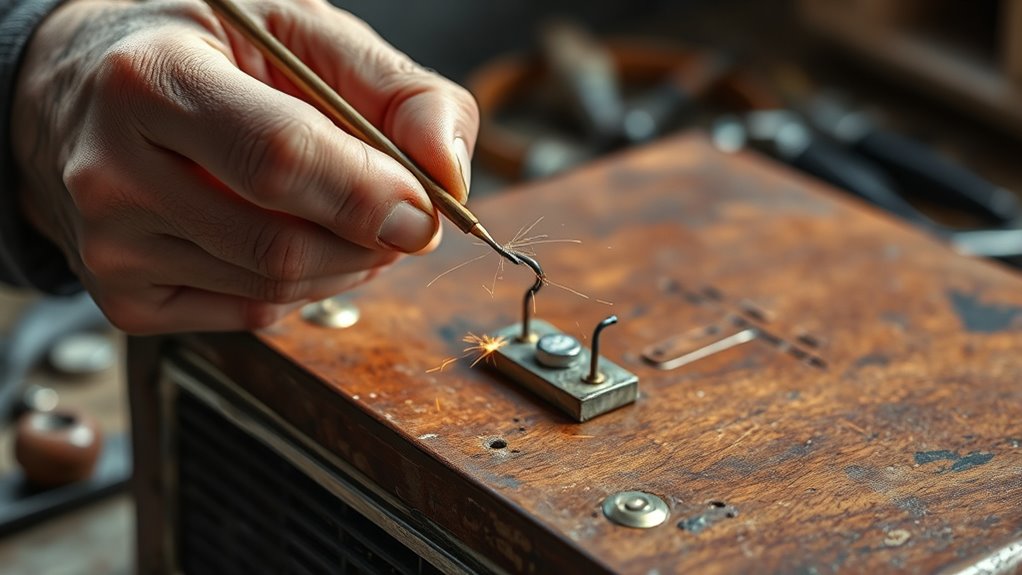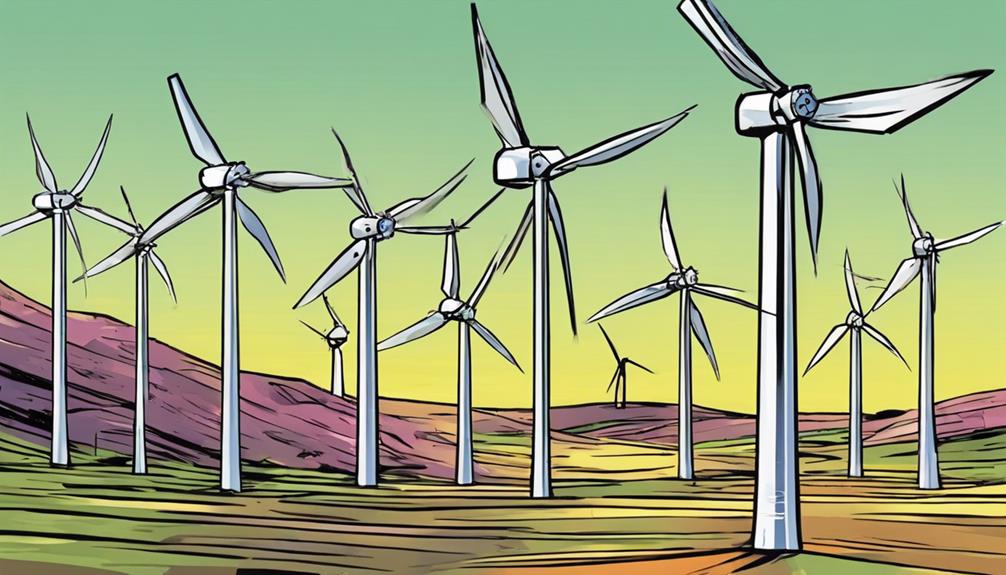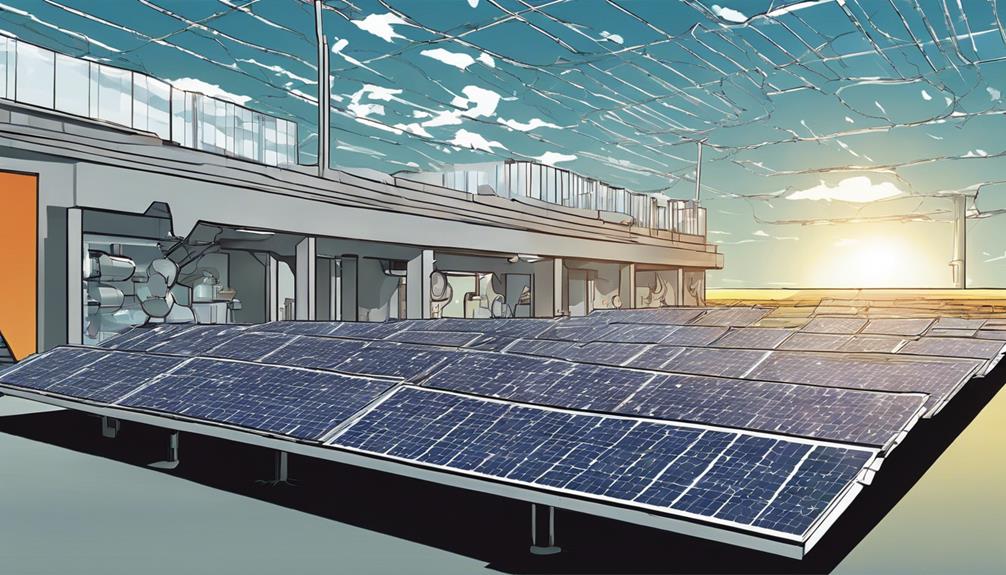By choosing to repair your appliances instead of tossing them, you actively reduce waste and lower your environmental impact. Repairing helps conserve natural resources, extend device lifespans, and promotes a more sustainable lifestyle. It also saves you money and supports local economies. Embracing repair encourages a circular economy and responsible consumption. If you want to discover how fixing things can make a bigger difference, keep exploring the power of repair and its positive effects.
Key Takeaways
- Repair reduces electronic waste, conserving resources and minimizing environmental harm.
- Fixing appliances is often more cost-effective and sustainable than replacing them.
- Supporting repair promotes a circular economy by extending device lifespan and reducing landfill waste.
- DIY troubleshooting and professional repairs keep devices safe, efficient, and functional longer.
- Embracing repair fosters eco-friendly habits, reducing personal carbon footprints and encouraging responsible consumption.

When your electronics or household appliances break down, it’s tempting to toss them out and buy new ones. But before you do, consider the impact your consumer habits have on the environment. Choosing to repair instead of replace aligns with sustainable practices that help reduce waste and conserve resources. Every time you opt to fix a device, you’re making a conscious decision to extend its lifespan, which minimizes the amount of e-waste piling up in landfills. This shift in consumer habits isn’t just good for the planet; it’s also a way to save money over time. Repairing your appliances often costs less than buying new, especially when you factor in the expenses of shipping and manufacturing. Additionally, repairing promotes the use of durable and repairable products, which can help extend the lifespan of your devices and improve overall performance. Emphasizing repair also supports the growing movement towards sustainable consumption, encouraging more mindful choices in everyday life.
Repair appliances to reduce waste, save money, and support sustainable living.
Fixing what’s broken can seem intimidating, but many problems are simple to resolve with basic troubleshooting or professional repairs. Instead of immediately discarding a malfunctioning coffee maker, washing machine, or smartphone, ask yourself if it’s worth trying to repair. Sometimes, the issue is minor, like a clogged filter or a loose connection, that can be fixed with a few tools or guidance from a repair technician. By adopting this mindset, you’re actively participating in a circular economy that values reuse and longevity. It’s a small step, but collectively, these choices can make a significant difference in reducing your carbon footprint. Moreover, embracing repair fosters a mindset of resourcefulness and mindfulness. Instead of impulsively replacing items, you learn to prioritize maintenance and care. This approach also encourages you to seek out quality products designed for durability and easier repairs, further supporting sustainable practices.
Many manufacturers now offer repair manuals or spare parts, making it easier than ever to keep your devices running longer. Supporting local repair shops or DIY repairs not only keeps your money within your community but also reduces the environmental impact of manufacturing and shipping new products. Additionally, repairing can help maintain the functional integrity of your devices, ensuring they operate safely and efficiently for years to come. In the end, your consumer habits carry power. By choosing to repair over replace, you’re actively participating in a movement toward sustainability. It’s about more than just fixing appliances; it’s about reshaping how we value resources and waste. Your decision to fix instead of toss contributes to a greener world, encouraging others to follow suit. Every repair adds up, creating a ripple effect that promotes smarter, more environmentally conscious choices. So next time something breaks, remember that fixing it isn’t just a practical option—it’s a powerful act of environmental stewardship that benefits us all.
Frequently Asked Questions
How Can I Identify Which Items Are Worth Repairing?
When deciding which items are worth repairing, consider their repair cost and durability. If the repair cost is reasonable compared to buying new, and the item is durable with a long lifespan, it’s worth fixing. Look for signs of extensive damage or outdated technology that might make repairs impractical. By evaluating these factors, you can make smarter choices and extend your item’s life, saving money and reducing waste.
What Are Simple Repair Tips for Beginners?
Imagine finding that squeaky chair or flickering light bulb—simple problems that beg for DIY fixes. As a beginner, start with basic tools like a screwdriver and pliers, and learn to tighten screws or replace batteries. Keep an easy repair kit handy, and watch tutorials for guidance. With patience, you’ll gain confidence, making small fixes feels rewarding, and you’ll extend your items’ life—all while helping the planet.
Are There Eco-Friendly Repair Materials Available?
Yes, eco-friendly repair materials are available. You can choose sustainable materials like bamboo, recycled metal, or biodegradable plastics for repairs. Additionally, look for eco-friendly adhesives that reduce harmful chemicals and environmental impact. Using these options helps you repair items responsibly while minimizing your ecological footprint. By selecting sustainable materials and eco-friendly adhesives, you contribute to a greener world and promote sustainable living through simple, effective repairs.
How Does Repairing Extend Product Lifespan?
When you repair items instead of replacing them, you directly boost product durability, making your belongings last longer. This practice reduces the environmental impact by decreasing waste and lessening the demand for new products. By fixing what’s broken, you help conserve resources, lower emissions, and support a more sustainable world. Your efforts in repair lead to fewer discarded items, making a meaningful difference for both the planet and your wallet.
What Community Resources Support Repair Initiatives?
You can find community repair programs that offer workshops and guidance to help you fix your items, saving money and reducing waste. Tool exchange initiatives are also great resources, allowing you to swap tools instead of buying new ones. These programs foster skill-sharing and sustainability, making it easier for you to repair your belongings and contribute to a greener world. Check local community centers or online platforms for nearby options.
Conclusion
Just like the phoenix rising from its ashes, your choices can renew what’s broken instead of discarding it. Every small repair you make fuels a greener world, proving that you hold the power to challenge the throwaway culture. Imagine yourself as a modern-day hero, wielding the tools of sustainability. By fixing rather than tossing, you’re not just saving objects—you’re shaping a future where harmony with our planet endures. The choice to repair is your act of rebellion and hope.










